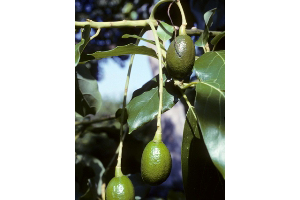|
Do you see...?
|
| Leaves
|
Young leaves
One or more young, unfolded leaves are visible on the plant. A leaf is considered "young" and "unfolded" once its entire length has emerged from a breaking bud, stem node or growing stem tip, so that the leaf base is visible at its point of attachment to the leaf stalk (petiole) or stem, but before the leaf has reached full size or turned the darker green color or tougher texture of mature leaves on the plant. Do not include fully dried or dead leaves.
How many young leaves are present?
- Less than 3
- 3 to 10
- 11 to 100
- 101 to 1,000
- 1,001 to 10,000
- More than 10,000
|
|
|
Leaves
One or more live, unfolded leaves are visible on the plant. A leaf is considered "unfolded" once its entire length has emerged from a breaking bud, stem node or growing stem tip, so that the leaf base is visible at its point of attachment to the leaf stalk (petiole) or stem. Do not include fully dried or dead leaves.
More...
What percentage of the potential canopy space is full with leaves? Ignore dead branches in your estimate of potential canopy space.
- Less than 5%
- 5-24%
- 25-49%
- 50-74%
- 75-94%
- 95% or more
|
|
|
Colored leaves
One or more leaves show some of their typical late-season color, or yellow or brown due to drought or other stresses. Do not include small spots of color due to minor leaf damage, or dieback on branches that have broken. Do not include fully dried or dead leaves that remain on the plant.
More...
What percentage of the potential canopy space is full with non-green leaf color? Ignore dead branches in your estimate of potential canopy space.
- Less than 5%
- 5-24%
- 25-49%
- 50-74%
- 75-94%
- 95% or more
|
|
|
Falling leaves
One or more leaves with typical late-season color, or yellow or brown due to other stresses, are falling or have recently fallen from the plant. Do not include fully dried or dead leaves that remain on the plant for many days before falling.
More...
|
| Flowers
|
Flowers or flower buds
One or more fresh open or unopened flowers or flower buds are visible on the plant. Include flower buds or inflorescences that are swelling or expanding, but do not include those that are tightly closed and not actively growing (dormant). Also do not include wilted or dried flowers.
More...
How many flowers and flower buds are present? For species in which individual flowers are clustered in flower heads, spikes or catkins (inflorescences), simply estimate the number of flower heads, spikes or catkins and not the number of individual flowers.
- Less than 3
- 3 to 10
- 11 to 100
- 101 to 1,000
- 1,001 to 10,000
- More than 10,000
|
|
|
Open flowers
One or more open, fresh flowers are visible on the plant. Flowers are considered "open" when the reproductive parts (male stamens or female pistils) are visible between or within unfolded or open flower parts (petals, floral tubes or sepals). Do not include wilted or dried flowers.
More...
What percentage of all fresh flowers (buds plus unopened plus open) on the plant are open? For species in which individual flowers are clustered in flower heads, spikes or catkins (inflorescences), estimate the percentage of all individual flowers that are open.
- Less than 5%
- 5-24%
- 25-49%
- 50-74%
- 75-94%
- 95% or more
|
| Fruits
|
Fruits
One or more fruits are visible on the plant. For Persea americana, the fruit is very large and leathery-skinned and changes from green to its appropriate ripened varietal color (which may be green, black, purple or reddish), and drops from the plant.
More...
How many fruits are present?
- Less than 3
- 3 to 10
- 11 to 100
- 101 to 1,000
- 1,001 to 10,000
- More than 10,000
|
|
|
Ripe fruits
One or more ripe fruits are visible on the plant. For Persea americana, a fruit is considered ripe when it has changed to its appropriate ripened varietal color (which may be green, black, purple or reddish), or when it readily drops from the plant when touched.
More...
What percentage of all fruits (unripe plus ripe) on the plant are ripe?
- Less than 5%
- 5-24%
- 25-49%
- 50-74%
- 75-94%
- 95% or more
|
|
|
Recent fruit or seed drop
One or more mature fruits or seeds have dropped or been removed from the plant since your last visit. Do not include obviously immature fruits that have dropped before ripening, such as in a heavy rain or wind, or empty fruits that had long ago dropped all of their seeds but remained on the plant.
More...
How many mature fruits have dropped seeds or have completely dropped or been removed from the plant since your last visit?
- Less than 3
- 3 to 10
- 11 to 100
- 101 to 1,000
- 1,001 to 10,000
- More than 10,000
|
